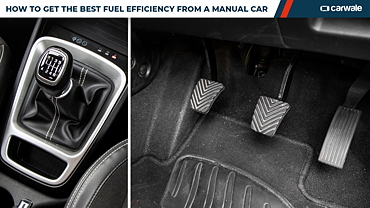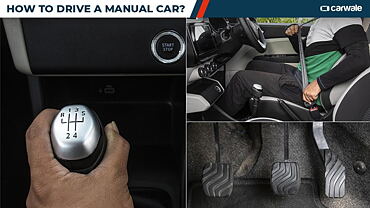
I am seated in the office of Dr Santosh Maini, president of the Maini group, as we await the arrival of Chetan Maini, CEO of Mahindra Reva and unarguably India’s Mr Electric. The office is filled with many awards, degrees, books and a plethora of family photos. The books and awards reflect the illustrious tale of the Maini family while the family photos reflect a core value that underlies the group.
I am intimidated, yet excited by what I see around me and can only imagine what this interview will turn out to be like. Eventually, Chetan Maini casually strolls in and takes a seat in front of me. In my effort to stand up and greet him while simultaneously wanting to hand over my visiting card, I drop it. Embarrassed, I reach down to get the card but by then he has picked it up. My trepidation is washed away, the instant Chetan (in a refined voice mildly peppered with an American accent) says, ‘Hi, how do you do? Please have a seat’.
The all too familiar background question sets the tone for our conversation and Chetan starts the proceedings by telling me about the origins of Reva Electric Car Company (RECC). The inspiration sparked when he was a student at Michigan University in the late 1980s. He was a member of a winning team that raced a solar-powered car across the United States (and won) after which they drove the same car across the length of Australia.
India was a very different place at that time. The Licence Raj had been dismantled in 1991 and liberalisation was pollinating it seeds in all directions of India. There was great scope for growth for anyone with a dream and as a passionate car lover, Chetan, saw the potential for alternate energy powered vehicles and ultimately decided to return to India and start the company.
RECC was setup in 1994. There was a need at that time to move from performance-oriented EVs to technology-based solutions which would meet every day needs. He adds on a more humourous note that the trend has done a 360 degree turn and it is performance that people want from their EVs today.
Over the course of the next six years while the company developed, it also worked on its first and most popular product, the Reva. Its development saw a lot of hand-on work from Mr C himself who says that he was there for every stage of the development and literally saw the car come together.

The car was launched at a technology exhibition in Bengaluru in 2001 and it just took a short while for them to get an order for around 100 cars from a variety of customers. Their first office and showroom was the very building we were sitting in during the interview. Aptly named Maini Sadan, it located in the heart of Bengaluru on Lavelle Road and it is from here Maini expanded the business and eventually managed to get dealers for their vehicles in 8-9 cities across the country.
They began exporting the car to Europe in 2002 with a major push in 2004.At this point,with a hint of dignified pride in voice, he says that his heart swells every time he sees a Reva or Revai/G-Wiz parked in urban centers abroad. The Reva underwent its first and only major update in 2008 where it became the Revai.
Obviously by this point, I asked the inevitable and the question that will lead tothe more pertinent issues at hand. How did Mahindra come into the picture and what do both the companies aim to achieve from their alliance?
It was at 2010 Frankfurt Motor Show that RECC was displaying the Reva NXG and the Reva NXR as its next generation products. The former would ultimately go on to become to the Mahindra Reva e2o while the latter is yet to see production.
This Auto Show opened Chetan’s eyes to the scale at which other manufacturers were funding their EV programmes and the kind of products they were able to produce. In the light of such a realisation came Anand Mahindra and his grand vision of electric mobility under the M&M banner. The common goals and complementary requirements meant the alliance was inevitable.

The result of the alliance is a brand new plant (just down the road from the older facility) and the launch of the Mahindra Reva e2o in 2012. With it has come a host of new technologies that provide usage solutions for e2o in day-to-day life.
Mahindra Reva’s aims, as Chetan puts it, is to provide mobility solutions as well as to eventually create what he calls an ecosystem that will facilitate the usage and growth of electric mobility in the future. He says that it not just about manufacturing but to ultimately be a top provider in electric mobility solutions globally.
Despite the risk of looking biased, I am able to see some of his vision that electric mobility seems to be the only solution to our motoring needs in the future. With an increasing number of vehicles, shrinking spaces and adverse effects of climate change it seems like the most obvious path that manufacturers will need travel down. Oh and by the way, Mahindra has ultimate plans to electrify its entire range and Chetan and his team are expected to play a major role in this regard.
Getting down to main business at hand, I first question him on how Mahindra Reva plans to break out of the power loop and make its vehicles ultimately green. How do we get sustainable power to charge up the e2o in the future?

The power loop in this case refers to the fact that the cars while themselves are green and non-polluting, the main grid from which they pull their charge is either coal powered or through hydroelectricity. He says that an instant jump out of the conventional grid is not possible for a variety of reasons but using an EV is already a big step ahead because it means that while pollution still exists at the global level, it has been mitigated at the local level thanks to the EV.
To answer this question the company has created a proprietary system called sun-to-car which is basically a solar-powered charger for the e2o. It costs around Rs 1.1-lakh to Rs 2 lakh (depending on the version) to install but will provide the required energy for charging the car as well as providing charge to back to the main power grid. Each unit has a life span of 15-20 years which means subsidised power for those many years. What is more is that many state governments are now paying people for the units of solar power they generate or are providing subsidy for the purchase of equipment.
With an EV having 85 per cent efficiency as compared to ICEs rather low 20 per cent it seems almost logical that everyone should have moved ahead by now. So why then are there so few EVs on the road? Further, how will the National Electric Mobility Mission Plan 2020 play a crucial role for the EV industry?
The answer is simply down to range and connectivity. If an ICE vehicle were to run out of fuel, the next logical step would be to fill up at a petrol bunk which exists in the lakhs across the country. But an EV requires an electrical charging point which thanks to our poor electricity grid exists in small pockets mostly in major urban areas. To ensure that we have some chance of replicating the success that the west has achieved with regard to EVs so far, the Centre has instituted a National Electric Mobility Mission Plan 2020. Through the procedures of this policy it plans to have 5-6 million EVs on the Indian roads by 2020. Chetan says that if the demand increases for such vehicles then the necessary infrastructure will automatically begin to develop or be put in place.

I tell him that unlike Europe and America which have both had car cultures for well over 55 years now, we are still an aspirational market where owning a car is still a big deal and carries a lot of prestige with it.How then does an EV fit into such a buying cycle? Who will buy EVs when cars are still so expensive in India?
I was expecting some kind of surprise from him with regard to this question but in a causal manner and almost as if he has been asked this on a repeated basis, Chetan tells me that yes it true that we are an aspirational market. However, there exists a group of people (whom I suspect to be on the side of the higher income groups) who see EVs as a means of mobility in the future and are looking to adapt to it as quickly as possible.
What about mobility as a whole?
We must look at this statement with a much bigger picture in mind as it encompasses a whole range of mobility solutions across various vehicle sizes. What this basically means is that that with so much of congestion on the roads today, the above mentioned group has decided to shun travel using their own cars and instead make use of multi-modal public transport like metros and buses for their daily commute reducing their carbon footprint significantly. Such a move will also help implement an idea like London’s congestion charge and ultimately make moving around in heavily populated urban centres a much more joyful experience.
By this time, Chetan and I have been conversing for almost half-an-hour without realising that time has passed. It is at this point that our rhythm is broken by the repeated ringing of his cell phone. It is his secretary calling to remind him of another appointment. He declares at this point that we have 10 minutes more and then will need to wrap up the interview.
The current e2o is small and boxy, the perfect image for an EV at present but there is expected to be time when Mahindra Reva will start to offer other body styles too. He says that there are no plans at present but that such a direction is already under consideration. However, he did confirm that there will be a European version of the e2o shortly which will have added features as well as a much larger range than its Indian counterpart. Due to its fully electrical nature, the e2o is being promoted heavily in Bhutan and Chetan hopes that this will set the ball rolling for mass implementation in other places.

You have termed Mahindra Reva a company that provides electric mobility solutions, so what about two-wheelers? Is Mahindra Reva looking to get into those too?
India is one of the largest two-wheeler markets in the world and it only seems logical that if a company needs volumes, then two-wheelers is the right route. From what Chetan explains, I figure that the company is currently focussing on cars but has not ruled out venturing into two-wheelers in the future. It currently has plans to sell high-end electric two-wheelers in Europe and America and is working on launching operations there very soon.
By this time his secretary has become quite frantic and has rushed into the room reminding of the next appointment. I ask him to wrap up the interview by telling us what the future holds for Mahindra Reva, EVs in India and electric mobility globally.

On Mahindra Reva, he says that the company is currently well positioned and will be launching more products soon. More importantly its path of growth means that it a has strong base to grow on for the future. On India he says that we cannot make a change overnight but will have to do it step-by-step and the 2020 plan will play a major role in this regard. Finally on a global scale, he says that there is an evident shift in consumption patterns and that the auto industry will be a very different place within the next 15 years.

With this he stands up and is about to rush out when I ask him to pose for a picture which he gladly obliges. After a round of pictures he races out of the door. I am left deeply satisfied and a little in awe by the glimpse that I have got into the mind of India's very own Mr Electric. His grand visions and innovations gives me hope that with people like him thinking about the future of not just our country but also about the environment, there is hope for the future after all.





